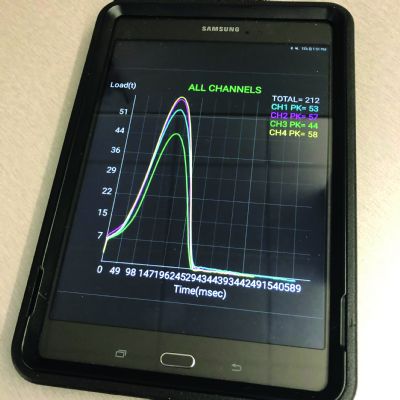 George Keremedjiev
George KeremedjievMutual Interference
October 1, 2010Comments
Inductive proximity sensors have a major interference issue that needs to be acknowledged and bench tested. As these sensors come in two general field outputs—shielded and nonshielded—the difference is sometimes misunderstood as being absolute. For example, the shielded style means that the inductive sensing field (a radio signal shaped, in most such sensors, like a relatively narrow fish), comes out of the top of the sensor and will not detect the material holding it in place. In other words, the sensor can be flush mounted within a block of tool steel and it will not pick up the block.
As you may recall, I am a very strong advocate of generating a drawing of the exact inductive field with a coupon or sample of the metal that will be detected. This “fish” as I have called it for decades can have some subtle surprises. While a flush-mounted shielded inductive proximity sensor will not pick up the block holding it in place, the shape of the fish may be slightly altered by that block. This means that even though the sensor does not turn on or off when flush mounted, the fish pattern initially generated with the sensor standing free on the test bench experiment may not be the same pattern experienced with the sensor flush mounted.
Why would this matter? For one, you may be trying to detect a very subtle change in position by the target. In such a scenario you are relying on the shape of the fish to be precisely what it was when you tested the sensor in a free-standing position. You carefully placed the sensor based on this fish geometry, only to discover that the sensor does not pick up the subtle target locations.What gives? Well, the fish shape has been slightly altered by the block holding the sensor in place. For most applications this is no big deal, but for those tight detections it can be a nasty surprise. To avoid such a surprise, when generating the exact shape of the fish on the bench, do so with the sensor flush mounted in a block made of the same tool steel that will be used to hold it in place in the actual die. This will give you the exact fish shape. Again, this is not a problem for the vast majority of basic die-protection applications, but it may become so for those precision detection applications.
A similar issue arises when one depends on the precise shape of a light beam for target detection. If that beam will be unobstructed in the die and be applied directly to the part, then what you tested on the bench will most probably be fine in the die. However, if the beam will be sent through a tunnel in a stripper or some other such opening within a tooling component, it is critical that you test the effect of this on the beam of light. Again, it may be possible that the sensor does not detect any of the walls of the tunnel as its light beam travels through it, but that does not mean that the beam that entered the tunnel is the same as the beam that exited. Too much diffusion and you could have a situation where the edges of the light are diminished by its travel through the opening—again, not enough to have the sensor turn on or off, but enough for the beam to have subtle dimensional changes that may affect the precise detection of a target. It is paramount that on the test bench you send the photoelectric beam through a simulation of the same opening you will be using in the actual die, and see what effect this will have on your target detection. MF
Technologies: Sensing/Electronics/IOT
Comments
Must be logged in to post a comment. Sign in or Create an Account
There are no comments posted.Pairing Sensor Types with the Problems They Address
Jim Finnerty March 29, 2024








